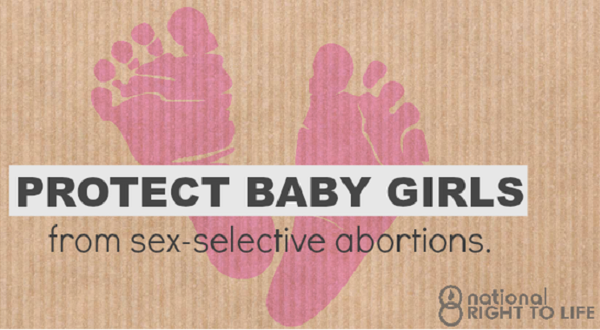New genetic tests that allow women to learn the sex of their baby early in pregnancy could lead to more targeting of girls for abortions, a London bioethics organization reported this week.
The blood test, known as non-invasive prenatal testing (NIPT), is performed around 9 or 10 weeks of pregnancy, and can detect the unborn child’s sex and certain genetic disorders, RT reports. The tests are highly accurate and less risky and invasive than amniocentesis, according to the report.
Growing use of NIPT led the London-based Nuffield Council on Bioethics to explore potential problems with the testing. The council’s report, released Wednesday, urges the British government to set certain restrictions on the testing to help prevent discrimination.
“We strongly believe there should be a ban on its use to find out the sex of the fetus, as this could lead to sex-selective abortions,” said Professor Tom Shakespeare, chair of the report group.
The bioethics group also warned about the possibility of the test being used to discriminate against people with disabilities. In the future, the group said these tests even could tell women non-essential information such as the baby’s eye color.
“People should have an NIPT test if they want one,” the researchers argued. “But only to check if their baby might be born with a serious health condition or disability.”
The council’s recommendations received swift criticism from one of the top abortion chains in England, the British Pregnancy Advisory Service, RT reported.
BPAS claimed the bioethics group’s recommendations are “permeated by a mistrust of women and the reproductive choices they make.”
Sex-selection abortions have become a major cause of concern across the world.
Click here to sign up for pro-life news alerts from LifeNews.com
In 2012, two abortion practitioners in England were suspended for their roles in facilitating illegal sex-selection abortions, as exposed by an undercover investigation by the London Telegraph. However, the Crown Prosecution Service dropped the case, arguing that prosecution of sex-selection abortions was not in the “public interest.”
A British government report in 2013 also found signs of sex-selection abortions, noting that birth rates for girls and boys vary noticeably according to where their mothers were born. A health minister said these differences in rates of male and female births among mothers of certain nationalities may “fall outside the range considered possible without intervention.”
The gendercide of girls has been going on for years in China, leading researchers to predict that there will be about 30 million Chinese men looking for wives outside its borders in the coming years.
Recent census data from China found that there were 708 million men and 675 million women in China in 2016, a further indication of the on-going abuse against girls. Government data from 2014 found the gender ratio at birth was an unnatural 115.88 boys to every 100 girls.
The population in India has a similar gender imbalance. In response, the government banned the practice of sex-selection abortions as well as testing for the baby’s sex. In 2015, the prime minster of India also promoted the value of daughters in a social campaign.
Sex-selection abortions also appear to be a problem in the western world, though there is not as much data about it. Only seven states in the U.S. ban the practice.
According to research by the Charlotte Lozier Institute, “One major study that analyzed U.S. Census data from 2000 found that third births in families of foreign-born Chinese, Indians, and Koreans in the U.S. who already had two daughters displayed a ratio of 151 boys to 100 girls—an extreme male-biased ratio.”








